Part 1 of the Architecture and Film course series, “Do Architects Dream of Celluloid Buildings?” (2.0 hour) reviews the seductive correspondence between cinema and architecture. Over the last four decades, the film-architecture analogy and startling technological advances, mostly deriving from computer science, have blurred the distinction between cinema and architecture. Collectively, this tends to obscure the most important aspect, which is architecture’s impact on the dual aims of cinema, e.g. narrative and technology. Part I reviews the conceptual, historical and technological relation between cinema and architecture. 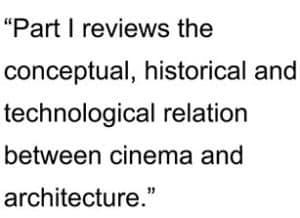 The “Architecture and Film” course series more closely examines the frequent role of the built environment in creatively reinforcing or subverting expectations of the audience about cinematic narratives. Click here to purchase this course ($14.99).
The “Architecture and Film” course series more closely examines the frequent role of the built environment in creatively reinforcing or subverting expectations of the audience about cinematic narratives. Click here to purchase this course ($14.99).
Key concepts: analogy, cinema, language, narrative, representation, technology.
Includes a two-hour video presentation and PDFs of the course supplementary material and slide handout.
Part 1 Film and Television Topics
The Wizard of Oz, A Trip to the Moon, Game of Thrones, Star Wars, The Hunger Games, Friends, New Girl, Planet of the Apes, Alice in Wonderland, Star Trek, To Kill a Mockingbird, Back to the Future, Westworld, When Dinosaurs Ruled the Earth, Jurassic Park, The Wedding Singer, The Terminator, Babylon 5, Captain America, Avatar, Battlestar Galactica, It’s a Wonderful Life, Zelig, Forrest Gump, Jupiter Rising, Toy Story, Tron, Resident Evil, Total Recall, The Matrix, A Scanner Darkly, Contagion, American Psycho, Metropolis, Blade Runner
Please note there may be a delay for a couple of hours before you are able to access the course because we have to confirm receipt of payment for each order before completing the purchase.
About the Instructor
 Dr. Mark David Major, AICP, CNU-A is an architect and planner with extensive experience in urban planning and design, business management and real estate development, and academia. He is a Professor of Urban Design at the Savannah College of Art and Design. Mark has been a visiting lecturer at the University of Florida, Georgia Tech, Architectural Association in London, the University of São Paulo in Brazil, and Politecnico di Milano in Italy.
Dr. Mark David Major, AICP, CNU-A is an architect and planner with extensive experience in urban planning and design, business management and real estate development, and academia. He is a Professor of Urban Design at the Savannah College of Art and Design. Mark has been a visiting lecturer at the University of Florida, Georgia Tech, Architectural Association in London, the University of São Paulo in Brazil, and Politecnico di Milano in Italy.

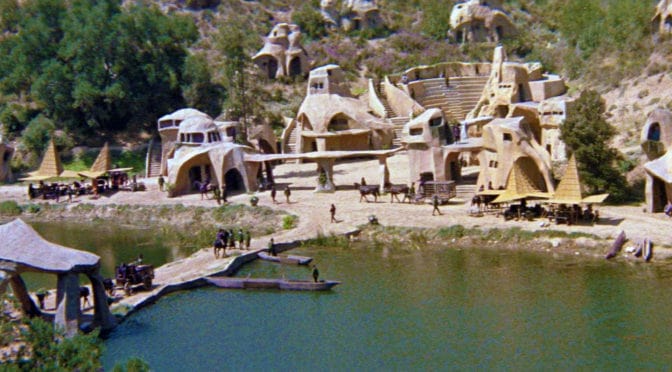

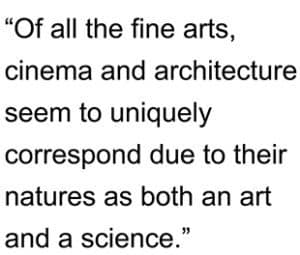 Part I reviews the conceptual, historical and technological correspondence between cinema and architecture. Parts II and III reviews filmmakers’ use of architectural typologies of space and form to craft distinctive film-grammars in service to cinematic narratives. Key concepts: film, narrative, artificial intelligence, CGI, technology, simulation, scale, historical precedent, architectural typology, and hyper-reality. Available soon to separately purchase as 2.0 hour courses ($14.99 each) or a 6.0 hour course series package ($39.99).
Part I reviews the conceptual, historical and technological correspondence between cinema and architecture. Parts II and III reviews filmmakers’ use of architectural typologies of space and form to craft distinctive film-grammars in service to cinematic narratives. Key concepts: film, narrative, artificial intelligence, CGI, technology, simulation, scale, historical precedent, architectural typology, and hyper-reality. Available soon to separately purchase as 2.0 hour courses ($14.99 each) or a 6.0 hour course series package ($39.99).
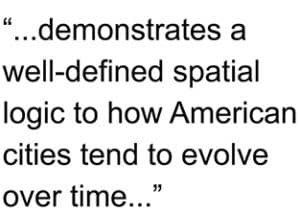 By understanding these concepts, we can better understand how “bedrock” urban attributes (such as block size and dwelling entrances) and common growth trends (such as strip malls and leapfrog development) play a role in the spatial logic of American cities. The objective of this course is to better understand the spatial implications of design decisions when intervening in the American city.
By understanding these concepts, we can better understand how “bedrock” urban attributes (such as block size and dwelling entrances) and common growth trends (such as strip malls and leapfrog development) play a role in the spatial logic of American cities. The objective of this course is to better understand the spatial implications of design decisions when intervening in the American city.
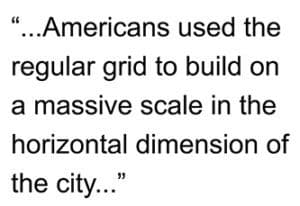 The course also compares the characteristics of block and street length in several American and European cities to demonstrate how Americans used the regular grid to build on a massive scale in the horizontal dimension of the city, which suburban sprawl has accentuated and abused since World War II. Finally, the course also discusses implications for sustainable cities in the 21st century.
The course also compares the characteristics of block and street length in several American and European cities to demonstrate how Americans used the regular grid to build on a massive scale in the horizontal dimension of the city, which suburban sprawl has accentuated and abused since World War II. Finally, the course also discusses implications for sustainable cities in the 21st century.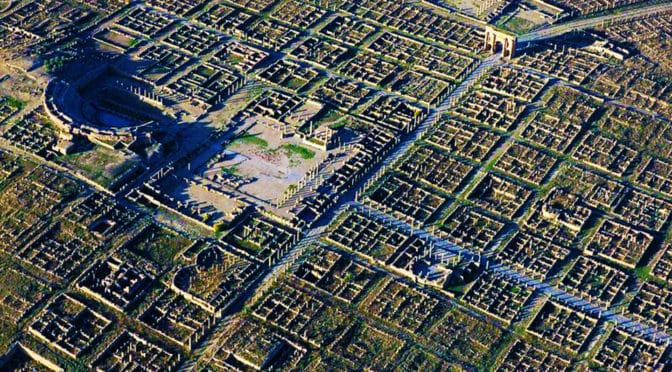
 The objective of this course is to understand how and why the regular grid has been a standard part of the town planning vocabulary around the world for nearly five millennia.
The objective of this course is to understand how and why the regular grid has been a standard part of the town planning vocabulary around the world for nearly five millennia.